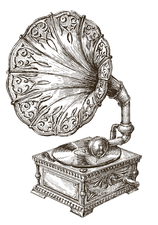Open source Symfonisk WiFi speaker
Speaker of the House

© Lead Image © sergeypykhonin, 123RF.com
Build open software, open hardware smart WiFi speakers for the home with the Sonos and Ikea Symfonisk.
Smart WiFi speakers are ubiquitous, attractive, and easy to use, but if you don't always want to buy the latest model – or simply love your independence – you can build your own loudspeakers to grace your living room. What you learn in the process also helps if you decide to convert high-quality passive loudspeakers.
With smart speakers from major manufacturers, the smarter the speaker functions the more problematic the speaker longevity. Additionally, you are dependent on the manufacturer in terms of the feature set and potential updates. Only what is deemed to be useful ends up on the loudspeaker feature list. For example, Sonos hasn't upgraded the Samba client that it comes with for years [1], saying the device doesn't have sufficient hardware resources. Surprisingly, they found enough scope for several other new functions.
After Sonos announced it would discontinue support for the first-generation operating system [2] and switch to the next generation, S2, fully functional devices suddenly experienced massive limitations [3]. Other manufacturers are not exactly excelling in this respect either: Competitors to the pioneer of cross-room loudspeaker components often discontinue support for their equipment far too early.
[...]
Buy this article as PDF
(incl. VAT)
Buy Linux Magazine
Subscribe to our Linux Newsletters
Find Linux and Open Source Jobs
Subscribe to our ADMIN Newsletters
Support Our Work
Linux Magazine content is made possible with support from readers like you. Please consider contributing when you’ve found an article to be beneficial.

News
-
Linux Mint 22.3 Now Available with New Tools
Linux Mint 22.3 has been released with a pair of new tools for system admins and some pretty cool new features.
-
New Linux Malware Targets Cloud-Based Linux Installations
VoidLink, a new Linux malware, should be of real concern because of its stealth and customization.
-
Say Goodbye to Middle-Mouse Paste
Both Gnome and Firefox have proposed getting rid of a long-time favorite Linux feature.
-
Manjaro 26.0 Primary Desktop Environments Default to Wayland
If you want to stick with X.Org, you'll be limited to the desktop environments you can choose.
-
Mozilla Plans to AI-ify Firefox
With a new CEO in control, Mozilla is doubling down on a strategy of trust, all the while leaning into AI.
-
Gnome Says No to AI-Generated Extensions
If you're a developer wanting to create a new Gnome extension, you'd best set aside that AI code generator, because the extension team will have none of that.
-
Parrot OS Switches to KDE Plasma Desktop
Yet another distro is making the move to the KDE Plasma desktop.
-
TUXEDO Announces Gemini 17
TUXEDO Computers has released the fourth generation of its Gemini laptop with plenty of updates.
-
Two New Distros Adopt Enlightenment
MX Moksha and AV Linux 25 join ranks with Bodhi Linux and embrace the Enlightenment desktop.
-
Solus Linux 4.8 Removes Python 2
Solus Linux 4.8 has been released with the latest Linux kernel, updated desktops, and a key removal.

